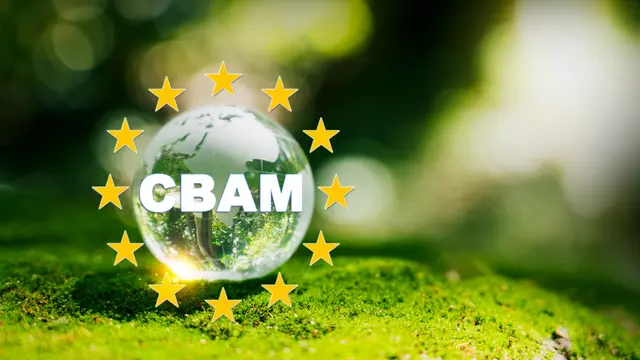EU's Omnibus Update
A Step Forward or a Step Back?

On February 26, 2025, the European Commission dropped a bombshell: the "Omnibus Simplification Package," a sweeping overhaul of sustainability regulations under the EU Green Deal. Targeting heavyweights like the Corporate Sustainability Reporting Directive (CSRD), the Corporate Sustainability Due Diligence Directive (CSDDD), and the EU Taxonomy, this package aims to slash reporting burdens by 25% (35% for SMEs), delay deadlines, and boost competitiveness. For businesses suffocating under compliance complexity, it’s a lifeline. But as the applause fades, a nagging question lingers: Does this propel the EU’s green agenda forward—or yank it back from the brink of real change? Let’s dive into this high-stakes drama and weigh the evidence.
The Omnibus Breakdown: What’s on the Table?
The Omnibus package is a double act: a "Postponement Directive" pushing CSRD and CSDDD timelines out two years (to 2027 and 2028 for most firms) and an "Amendment Directive" trimming the fat from reporting rules. It’s the EU’s answer to cries from businesses and member states that overlapping ESG mandates—like the CSRD’s 1,000+ data points or the CSDDD’s supply chain deep dive—threaten economic vitality.
Here’s the gist:
1. Smaller Net: CSRD now applies only to firms with over 1,000 employees and €50 million in turnover or €25 million in assets, cutting the in-scope pool by 80%. Non-EU companies need €450 million in EU turnover (up from €150 million) to qualify.
2. Leaner Reporting: Taxonomy data points shrink by two-thirds, and CSRD disclosures get a clarity makeover.
3. Softer Audits: "Reasonable assurance" becomes "limited assurance," lightening the verification load.
4. Targeted Due Diligence: CSDDD focuses on direct, large suppliers, sparing SMEs and indirect partners unless harm is blatant.
The Commission frames this as a “smart simplification”—keeping sustainability goals intact while easing the strain. But with the European Parliament and Council yet to sign off, debates could drag into 2026, leaving companies in a regulatory twilight zone.
The Case for Forward: A Breather for Business

For many, the Omnibus is a godsend. Europe’s firms, especially mid-sized ones, have been reeling from the CSRD’s granularity and the CSDDD’s global reach. SMEs, often caught indirectly via supply chain rules, faced disproportionate costs, while large corporations juggled duplicative reporting across frameworks. By dialing back, the EU nods to Ursula von der Leyen’s vow to cut red tape and level the playing field against U.S. and Chinese rivals.
Take a mid-sized manufacturer in Germany. Pre-Omnibus, it faced CSRD reporting in 2024, requiring detailed emissions data across its supply chain—a Herculean task for a firm with 300 employees. Now, exempt unless it hits the 1,000-employee mark, it can redirect resources to growth or voluntary sustainability efforts. Even larger firms benefit: fewer data points mean leaner compliance teams and lower costs. The Commission estimates savings in the billions, a boon as Europe navigates economic headwinds.
This isn’t just about relief—it’s about pragmatism. The Draghi Report (2024) warned that regulatory overload risks hobbling innovation, with EU firms trailing U.S. peers in R&D spending. By easing the ESG yoke, the Omnibus could free capital for decarbonization or tech upgrades, aligning with the Clean Industrial Deal’s €100 billion green investment push. For businesses, it’s a chance to breathe, recalibrate, and compete.
The Case for Back: A Retreat from Ambition
Not everyone’s cheering. Critics see the Omnibus as a gut punch to the EU’s green leadership. The CSRD and CSDDD were linchpins of the Green Deal, forcing companies to embed sustainability and answer for global impacts. Shrinking the in-scope pool by 80% blinds regulators to firms driving significant emissions or social risks. Slashing Taxonomy data, meanwhile, muddies how activities stack up against climate goals, leaving investors guessing.
Timing amplifies the stakes. With 2030 climate deadlines closing in, delaying reporting and softening due diligence could stall progress. SMEs—99% of EU businesses and 60% of emissions—might dodge the push to decarbonize without mandatory rules, especially if voluntary efforts lag. The shift to “limited assurance” sparks fears of greenwashing, as weaker audits let shaky claims slide. Transparency, the bedrock of ESG, takes a hit.
Consider a Spanish textile maker, now out of CSRD scope. Free from reporting, it might postpone upgrading its water-guzzling factories, even as droughts intensify. Investors, hungry for consistent ESG data, may look elsewhere, while rivals in stricter markets—like Japan—gain a sustainability edge. Critics argue the Omnibus trades long-term resilience for short-term ease, risking Europe’s moral and economic high ground.
The Gray Zone: Winners and Losers
The Omnibus isn’t black-and-white—it’s a kaleidoscope of trade-offs. Large firms still in scope get a lighter load but lose some excuse to delay action. Exempt SMEs gain flexibility but miss the structured nudge to modernize. Supply chains feel the ripple: big players face focused scrutiny, while smaller suppliers slip under the radar—potentially hiding risks. Consumers and investors, craving clarity, might find reports less robust, yet easier to digest.
Data paints a mixed picture. The European Environment Agency notes uneven ESG adoption—only 40% of SMEs track emissions voluntarily—suggesting exemptions could widen gaps. Yet, the World Economic Forum (2025) flags regulatory fatigue as a top business risk, backing the case for simplification. The Omnibus walks a tightrope: ease the burden without unraveling progress.
The Political Undercurrent

This isn’t just policy—it’s politics. Post-2024 elections, a right-leaning European Parliament leans toward deregulation, reflecting a broader pushback against “green overreach.” The Omnibus, some say, is a concession to appease industry and populist voices, especially as energy prices bite. But the Clean Industrial Deal’s €100 billion injection signals the EU isn’t abandoning its green ship—just trimming the sails. Whether this balance holds depends on parliamentary wrangling and member state buy-in.
The Road Ahead: Opportunity in Uncertainty
So, is the Omnibus a step forward or back? It’s neither—and both. It’s a pragmatic pivot, easing compliance while preserving core intent, but a gamble on voluntary action and enforcement. Success hinges on execution: Will firms step up where rules step back? Will the EU double down on incentives to fill the void? For now, it’s a holding pattern—relief for some, regression for others.
Businesses face a choice. Those still in scope must adapt to leaner rules without losing sight of stakeholder demands. Exempt firms can seize the moment—voluntarily tracking ESG to woo investors or customers—or coast and risk obsolescence. The Omnibus reshuffles the deck, but the game’s still on.
Conclusion: A New Playbook
The EU’s Omnibus Update is less a verdict than a crossroads. It lightens the load, potentially unlocking growth, but tests the bloc’s resolve. Sustainability isn’t dead—it’s evolving. Companies that navigate this shift with agility, balancing compliance and ambition, will lead the pack. The EU’s green dream lives, but its next act depends on collective will—businesses, regulators, and society alike. Step forward or back? The jury’s still out.




